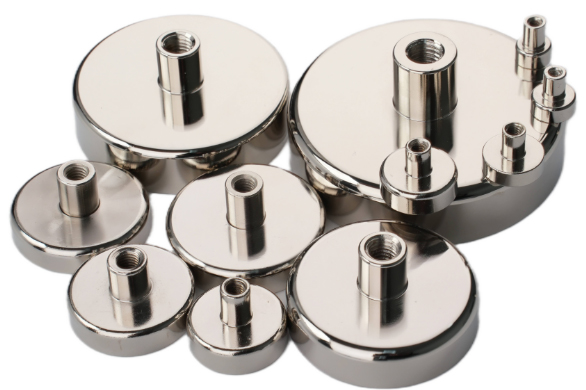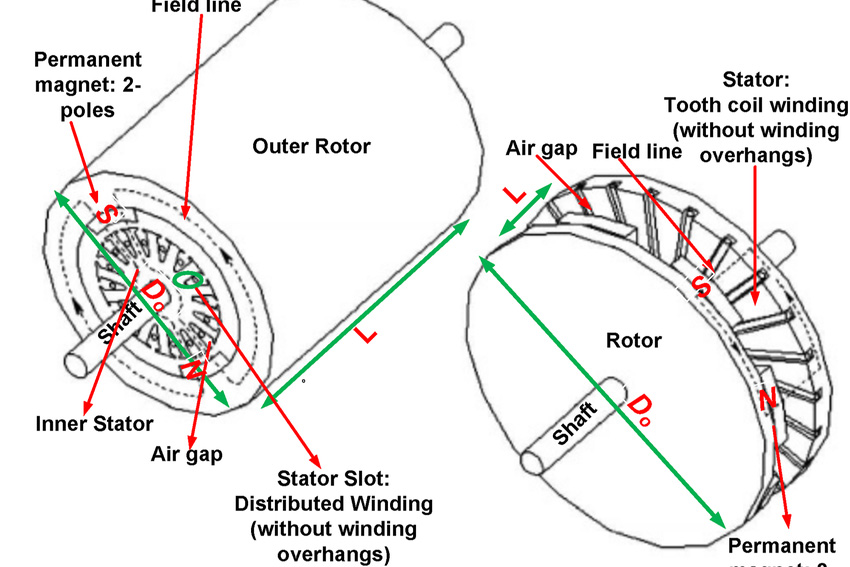What Is an Alnico Magnet & What Is Alnico Magnet Used for?
Many people who are new to the world of magnets may ask such questions as what is an AlNiCo magnet and what is an Alnico magnet used for? Alnico (aluminum nickel cobalt) is a kind of permanent magnet material that was first successfully developed in the 1930s. It is an alloy composed of aluminum, nickel, cobalt, iron, and other trace metal elements.
 What Is an Alnico Magnet?
What Is an Alnico Magnet?
At that time, due to their excellent magnetic properties and a small temperature coefficient, Alnico magnets were widely used in permanent magnet motors. However, since the 1960s, with the advent of ferrite permanent magnets and rare earth permanent magnets, the application of aluminum nickel cobalt permanent magnets in motors has gradually been replaced by them.
The Properties of the Alnico Magnet
Alnico magnets have a high coercivity and high Curie temperature. However, Alnico magnets are hard and brittle and cannot be cold-worked. They must be made by casting or sintering procedures. Alnico magnets can generate a magnetic field up to 0.15 Tesla. Let's take an intermediate anisotropic cast aluminum-nickel-cobalt alloy as an example. The composition of Alnico-6 is 8% Al, 16% Ni, 24% Co, 3% Cu, 1% Ti, and the others are all Fe. Alnico-6 has a maximum BHmax of 3.9MG·Oe, a coercivity of 780 oersteds, a Curie temperature of 860 °C, and a maximum operating temperature of 525 °C.
The Classifications of the Alnico Magnet
According to their different production processes, AlNiCo magnets can be divided into sintered-AlNiCo magnets and cast-AlNiCo magnets. Generally, cast-AlNiCo magnets have a variety of sizes and shapes while sintered-AlNiCo magnets are generally smaller in size and higher in precision, but their magnetic properties are slightly lower than that of the cast-AlNiCo magnets. Among all permanent magnets, cast-AlNiCo permanent magnets enjoy the lowest reversible temperature coefficient, and their working temperature can be as high as 600 degrees Celsius or more.
The Advantages and Disadvantages of the Alnico Magnet
The advantages of AlNiCo magnets are high remanence (up to 1.35T) and low-temperature coefficient. When the temperature coefficient is -0.02%/℃, their maximum operating temperature can reach about 520℃. Their disadvantages are that their coercive force is very low (usually less than 160kA/m), and their demagnetization curve is nonlinear. Therefore, although Alnico magnets are easily magnetized, they are also easily demagnetized.
The Applications of the Alnico Magnet
Alnico permanent magnets play an essential role in many industrial and consumer products. You can find Alnico magnets in electric motors, electric guitar pickups, microphones, sensors, speakers, traveling wave tubes, cow magnets, etc. But now, many products are using rare earth magnets because these materials can provide a stronger magnetic field (Br) and a higher BHmax, allowing the product size to be reduced.
Conclusion
Thank you for reading our article and we hope it can help you to have a better understanding of what is an Alnico magnet and what is Alnico magnet used for. If you want to know more about Alnico magnets, we would like to recommend you visit Stanford Magnets for more information. Stanford Magnets is a leading magnet supplier throughout the world that has been involved in R&D, manufacturing, and sales of permanent magnets since the 1990s. It provides customers with high-quality rare earth permanent magnetic products, and other non-rare earth permanent magnets at a very competitive price.















